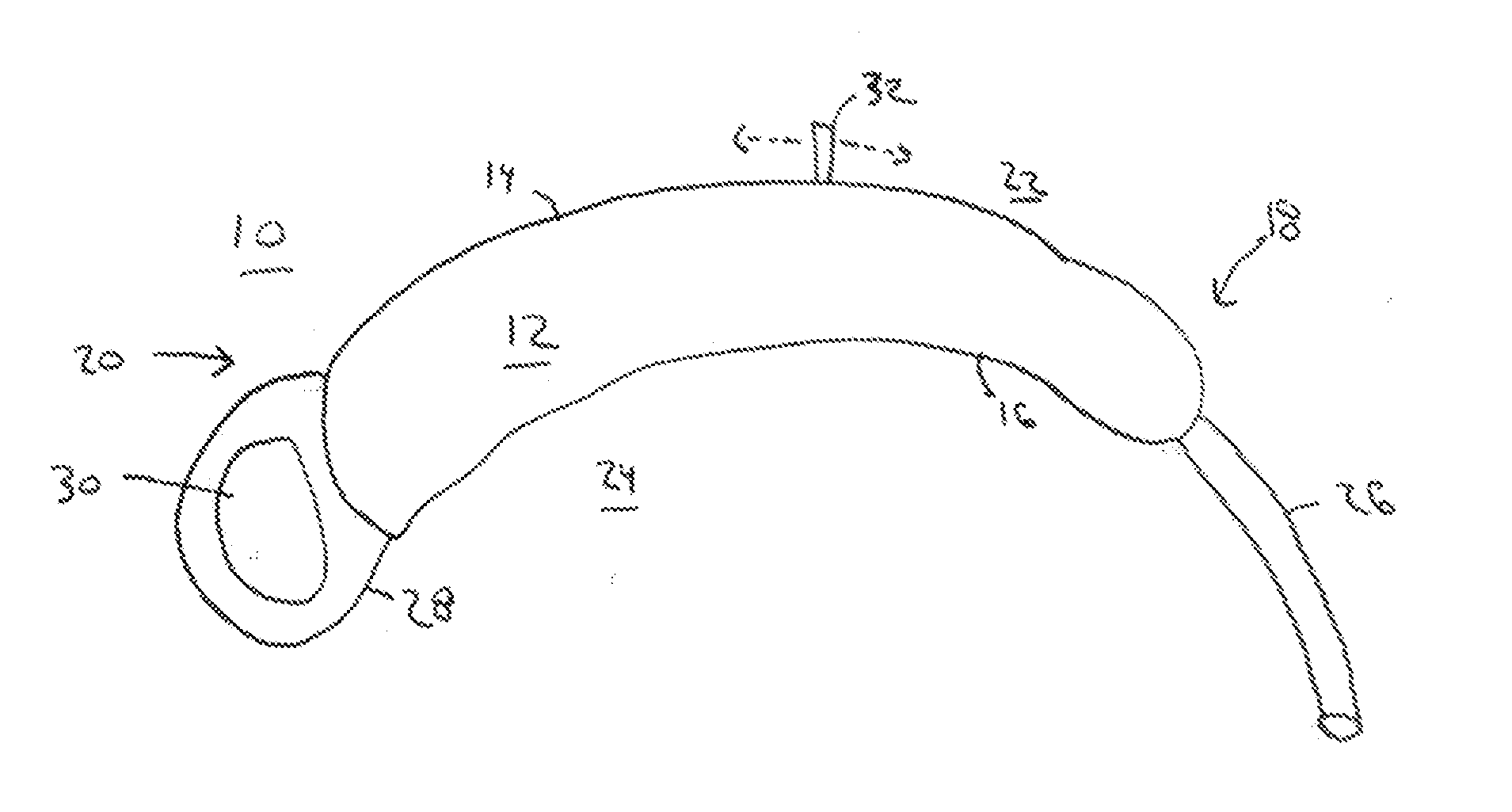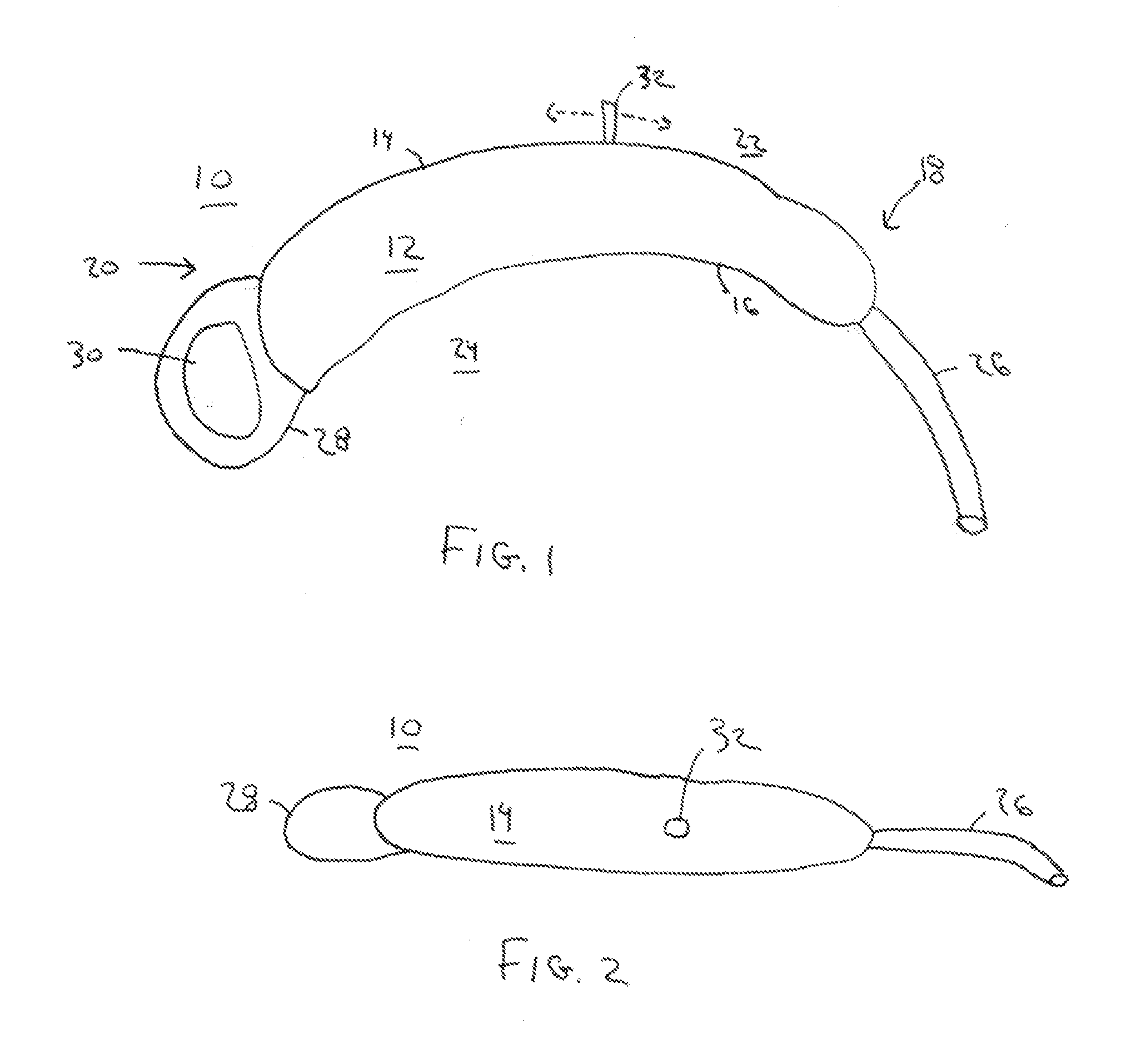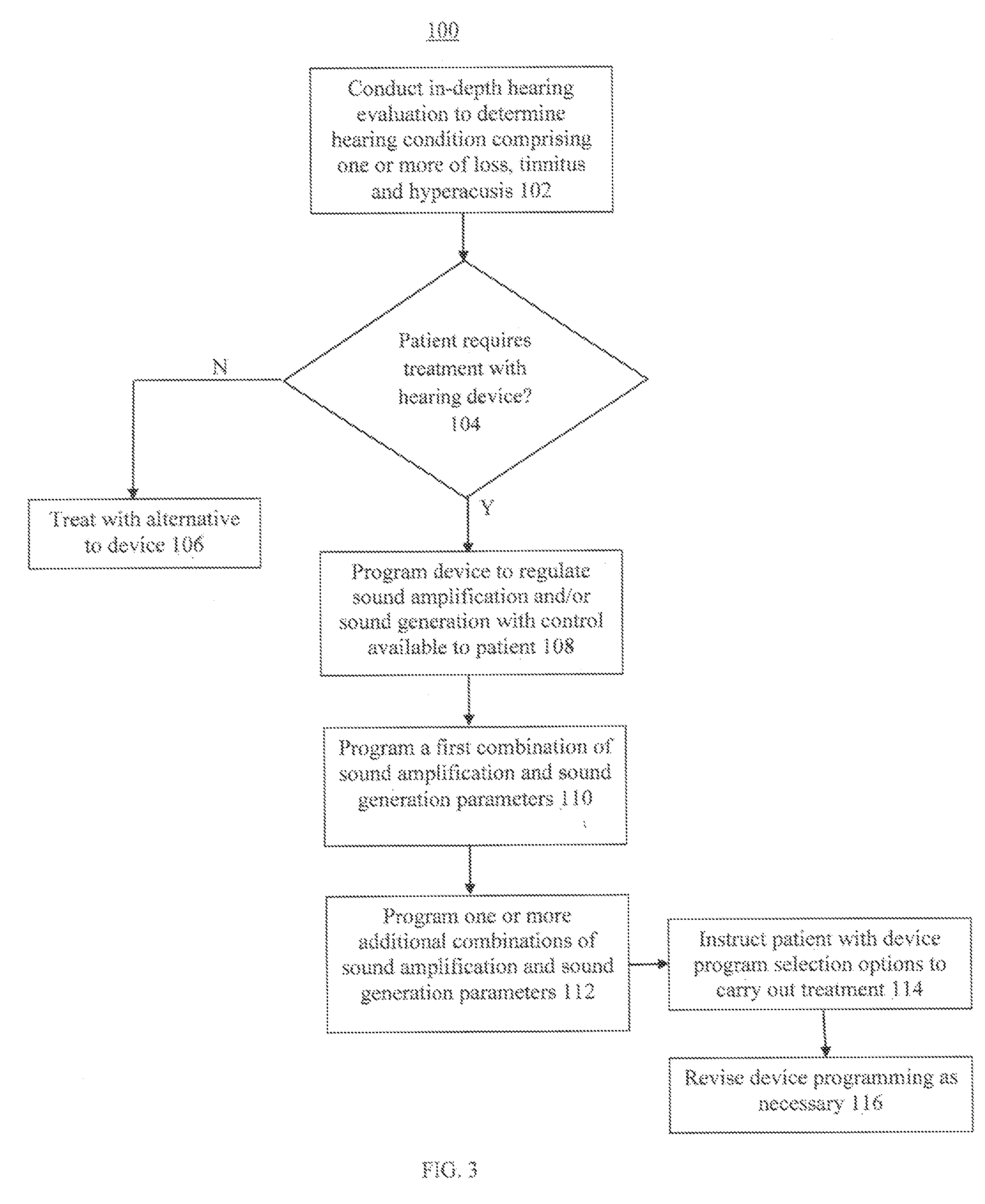Device and methods for the treatment of hearing conditions
a technology for hearing conditions and devices, applied in the field of hearing conditions, can solve the problems of inability to hear sounds at certain frequencies or through a spectrum of frequencies, many people suffer from hearing problems, inconveniences to debilitating conditions, etc., and achieve the effect of regulating the level of amplification and/or white nois
- Summary
- Abstract
- Description
- Claims
- Application Information
AI Technical Summary
Benefits of technology
Problems solved by technology
Method used
Image
Examples
Embodiment Construction
[0023]A device 10 suitable for controlling sound delivered to a patient's ear is shown in simplified form in FIGS. 1 and 2. The device 10 includes a main body 12 having an upper portion 14, a lower portion 16, a first end 18 and a second end 20. The main body 12 is of a generally arcuate shape as shown in FIG. 1. The device 10 positioned as shown in FIG. 1 includes a superior portion 22 and an inferior portion 24, wherein the inferior portion 24 makes contact with the ear behind the ear when the device 10 is in use. The first end 18 includes a sound-conducting conduit 26 in the form of a flexible tube that is inserted into the ear and is a sound wave conduit. The second end 20 includes an activation housing 28 for containing a device battery 30 therein. The activation housing 28 is hinged so that the device 10 may be turned on by closing the housing 28 for the battery 30 to make contact with contacts that energize the device 10, and so that the device 10 may be turned off by opening...
PUM
 Login to View More
Login to View More Abstract
Description
Claims
Application Information
 Login to View More
Login to View More - R&D
- Intellectual Property
- Life Sciences
- Materials
- Tech Scout
- Unparalleled Data Quality
- Higher Quality Content
- 60% Fewer Hallucinations
Browse by: Latest US Patents, China's latest patents, Technical Efficacy Thesaurus, Application Domain, Technology Topic, Popular Technical Reports.
© 2025 PatSnap. All rights reserved.Legal|Privacy policy|Modern Slavery Act Transparency Statement|Sitemap|About US| Contact US: help@patsnap.com



